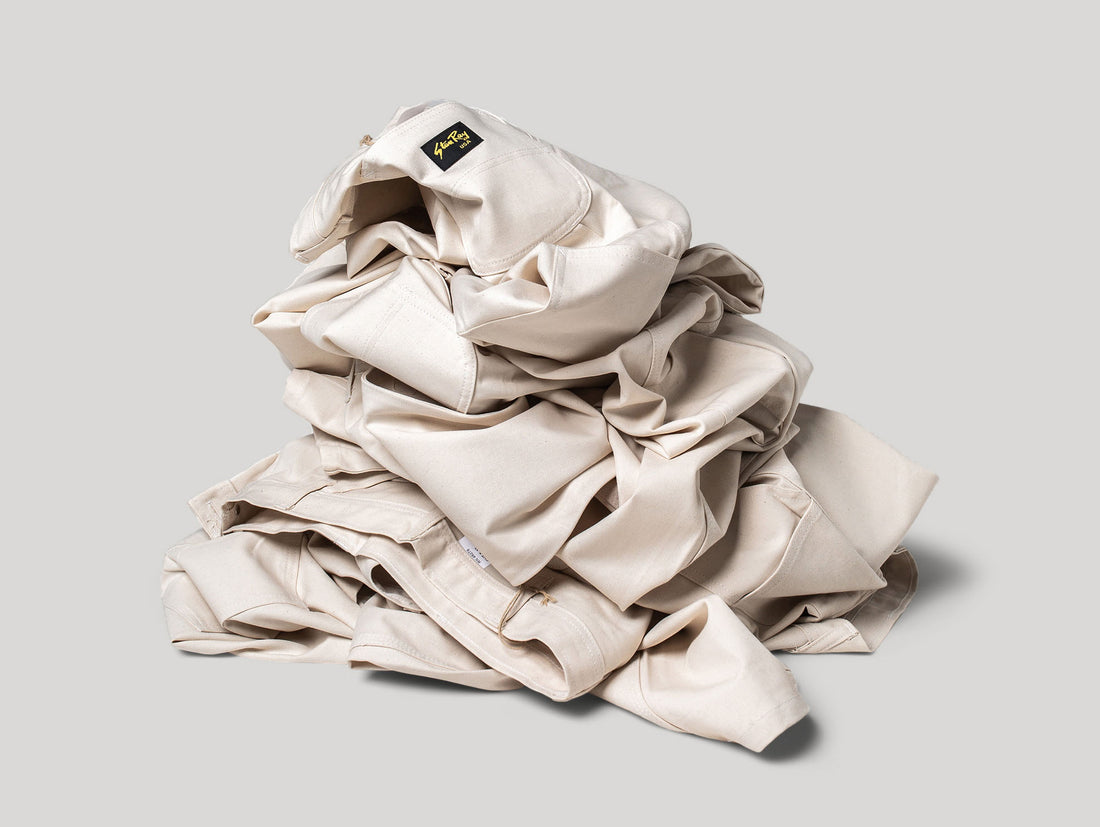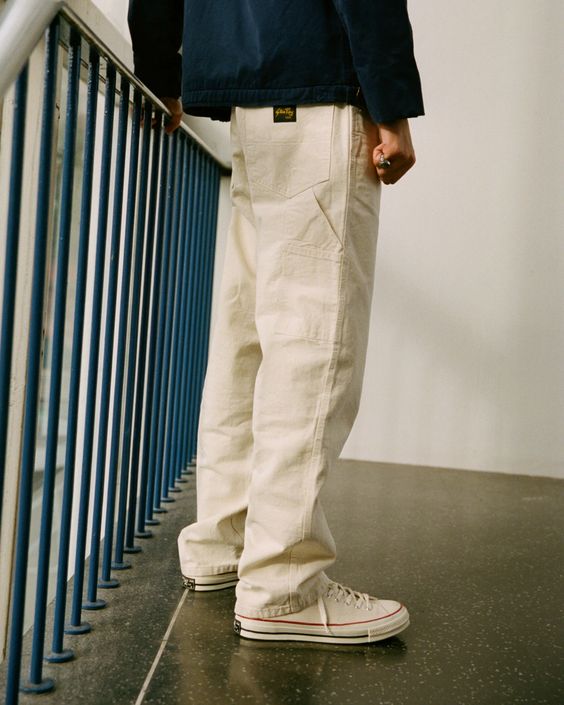
A brief history of Painter Pants
Share
If brands are lucky, they might have one timeless design they’re known for—Stan Ray on the other hand has two. Not only are our Fatigue Pants loved from San Francisco to Shibuya, but our Painter Pants are also a bonafide design classic—a firm favourite since the early days of the brand back in the 1970s.

Whilst we’ve been making painter pants for 50 years, their history actually stretches right back to the 17th century, and although the origins of the first painter is up for debate, it’s thought that the use of white canvas trousers dates back to the 1600s, when British sailors would repurpose old sailcloth into tough trousers fit for the salt-soaked life at sea.
Originally used more as an exercise in cost-cutting, this white cotton canvas sailcloth was also the perfect trouser fabric due to its hard-wearing, easily-repairable nature.
Local craftsmen—painters included—got wise to these hardy kecks, and were soon making their own, bringing the design onto dry land. As the world of work developed over the following centuries so too did workwear, and by the late 19th century, with the industrial revolution in full swing, work-pants had gone from being relatively humble productions often made at home to modern marvels in their own right, complete with copper rivets and sturdy triple stitching.
With specialist jobs requiring specialist clothing, details were added to help make specific jobs easier—in the case of painter and carpenter pants, that meant plenty of pocket space, a relaxed, roomy shape to aid movement and an extra loop on the leg for brushes or hammers.
Specific fabrics denoted specific trades too, and whilst this was by no means hard-and-fast (after all, the reality is never quite as black and white as history will sometimes make you believe), as a general rule railroad workers wore hickory stripe, farmers and miners wore indigo-dyed denim and painters wore white. Why? Well, there are a few theories as to why painters wore white, but it’s often thought the trademark white attire came about with the birth of a painter’s union in the 19th century. Keen to set themselves apart from their non-union counterparts, the union painters chose to wear crisp white clothing for a smarter appearance.

From a functional standpoint, the white was also better at reflecting heat making it ideal for house painters working up on ladders under the sweltering summer sun. And considering most painters were working with white paint, spills and splashes were less likely to be spotted.

Beyond the paint-splatter, it’s perhaps no surprise that these functional trousers were eventually reappropriated outside of their original purpose. In the early 1970s a new wave of rock climbers based in Yosemite National Park known as the Stonemasters started scouring California hardware shops in search of functional pants tough enough to put up with some serious cliff-face abuse—and painter pants more than fit the bill.
As pioneers of a fast-paced form of climbing known as ‘free climbing’ which relied less on equipment and more on style and speed, the Stonemasters needed clothes that wouldn’t hold them back—and painter pants were perfect. Not only were these roomy canvas pants seriously strong, but the bright white cotton was the perfect visual calling card for this new generation of counter-culture influenced climbers.
Worn with bright headbands and paisley shirts, the pants were a long way from the drab wool or corduroy pantaloons worn by the traditional climbers of yore—and realising their appeal, unofficial leader of the crew Jim Bridwell would make sure the Stonemasters were always wearing their crisp painter pants for photo ops.

The pants were political too—and around a similar time that Bridwell and co were wearing painter pants to separate themselves from the previous generation of climbers, young women were wearing them with work-boots as a symbol of women’s lib—fighting for equality in clothes traditionally reserved for men.
It’s around this time, in 1972, that we started making our Painter Pants, when Stan Ray founder Earl Beard started producing pants for the Brooklyn Overall Company from his small sewing shop in the town of Crockett, Texas. Half a century later, our OG Painter Pants are still in production, with a relaxed, straight legged fit, bar-tacked stress points and that trademark pocket configuration. For those looking for something a little sleeker, we make the 80s Painter Pants too—with tapered legs for a slightly slimmer shape.

This season we’ve also produced the Double Knee Painter Pants. The clue is in the name with these—not only do they have all the classic details that you’d expect from us, but they’ve got double-layered reinforced knees. A tried-and-tested work-wear detail devised to put up with the endless kneeling that painters and carpenters have to endure, you don’t have to be a fully-fledged tradesman to appreciate them, and they come in just as handy whether you’re skating, riding a bike or splashing some paint about in a studio. And don’t worry about getting marks on them—that’s part of the charm—it goes without saying that these pants are made to be worn.
Words by Sam Waller